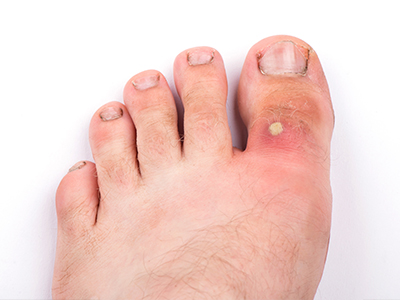


What is it?
An abscess is a collection of pus under the skin. Abscesses are considered localized infections that can cause pain and illness. An abscess can initiate the growth of aggressive infections and spread to other parts of the body. When an abscess develops on the foot, the area involved may become red, hot, swollen, and tender. This infection can spread and ultimately affect other tissues in the foot and leg requiring aggressive treatments. When abscesses become large and go untreated, the infection can spread to the bone and lead to a bone infection (osteomyelitis). Once the bone becomes infected, more extensive surgery may be necessary to resolve the infection.
What causes it?
Abscesses can be caused by many factors. Patients that have depressed immune systems are much more at risk for developing an abscess. Diabetes is an example of a disease where one’s immune system is compromised. A small break in the skin or a blister can start the formation of an abscess. Poor hygiene can also contribute to abscess development and must be addressed during the course of any treatment. Abscesses can form on the feet and can be extremely painful. Abscesses tend to grow in warm moist places. The foot is a frequent site for this condition. Trauma is another cause of abscess formation. When direct injury occurs to the foot or any part of the body resulting in a break in the skin, a pathway for infection is created.
How is it treated?
Abscesses can be treated conservatively or surgically depending on the extent of the abscess formation. Initially, the treatment should consist of rest and staying off of the affected limb or body part. Warm soaks and moist heat can help alleviate the pain associated with abscess formation. Antibiotics are usually given to the patient to fight off the infection. Depending upon the extent of the abscess and the organism involved, oral antibiotics may not be enough to fight off the infection. Drainage of the abscess may be warranted if the infection does not resolve. If the abscess is surgically treated IV or oral antibiotics may be administered. During the healing process, the wound should be kept clean and close monitoring of the condition should be performed. Even after the abscess appears healed monitoring of the area should be performed to prevent reoccurrence.